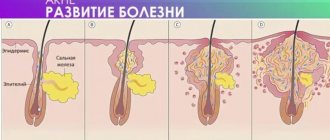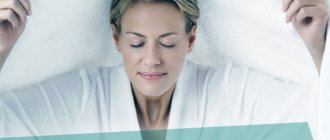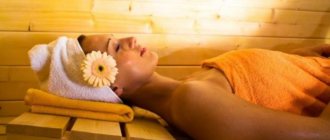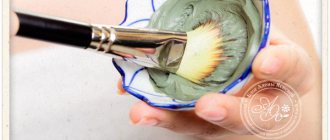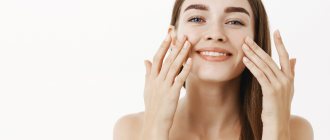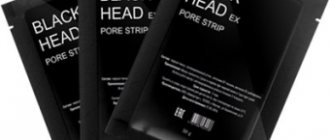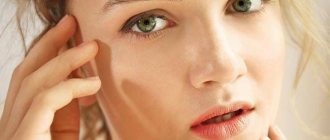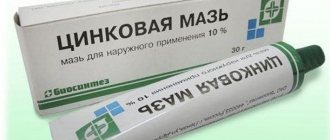How to clear acne from your face at home
Acne is an inflammatory process on the skin. This disease affects people of any gender and age. This disease occurs for various reasons:
- hormonal imbalance in the body;
- diseases of internal organs;
- stress and lack of sleep;
- poor nutrition;
- low-quality decorative cosmetics;
- insufficient care;
- hereditary predisposition.
In serious and advanced cases, treatment for acne is prescribed by a doctor after a detailed examination. For milder types of skin rashes, simple ointments, rubs, vitamins or other medications may be prescribed. But cosmetic procedures also help in eliminating this unpleasant phenomenon.
In particular, home care is a good alternative to visiting a beauty salon or spa:
- facial cleansing from acne takes place at a time when it is convenient;
- homely and comfortable environment;
- the risk of getting a burn or undergoing a very painful procedure is minimized;
- significant savings in money.
Attention! Cleaning the face for acne at home should not be carried out unless basic sanitary and hygienic standards are met and there is no confidence that the procedure is carried out correctly. At the slightest wrong movement, there is a risk of damaging the epidermis, causing an infection or getting infected.
Cleansing
Before starting all manipulations, you need to properly clean the epidermis from dust, excess sebum and cosmetics using lotion or micellar water. You need to wash your hands thoroughly and treat them with alcohol. You should also sterilize all instruments used, if any. Facial cleansing for acne at home should be done at a measured pace in order to pay due attention to each stage of the procedure.
Steaming
After all excess has been removed, you need to steam the skin. To do this, take one or more medicinal herbs, such as calendula, chamomile, tricolor violet, string and add to boiling water. Let it brew and cool slightly so as not to burn yourself. Cover your head with a towel and steam the skin on your face for 10-15 minutes.
Scrubbing
Apply the product and distribute it along the massage lines with light movements. The particles should not be large in size so as not to harm the epidermis. You can use either a store-bought version or a home-made one. It is better to make a scrub based on coffee grounds or crushed oatmeal.
Mechanical cleaning
When cleaning acne with your hands, you need to use a thin cloth so as not to injure the dermis with your nails. But it is better to use specialized tools: a Uno spoon, a Vidal needle and disinfectant wipes.
Treatment
When cleansing the face from acne at home is carried out, it is necessary to disinfect the dermis using hydrogen peroxide 3%.
Mask
This product is necessary to tighten pores and soothe the skin. Of course, a huge amount of this product is widely available on store shelves. But it’s also very easy to make a mask with your own hands.
Masks based on blue cosmetic clay, honey and kefir are ideal. To enhance the effect, you can add aromatic oils: lemon, orange, spruce, tea tree, lavender, ylang-ylang, rosemary and others. A non-comedogenic moisturizing cream is a finishing treatment that will help hydrate and soothe the dermis.
We treat acne and ulcers
Natural oils can quickly relieve irritation and prevent the appearance of acne. You can use tea tree extract, it is just a panacea for acne. It is very important to scrub the skin after using the ether.
The appearance of red and painful pimples on the face is always bad. And regardless of the reasons - critical days, too much sweets or other hormone surges, there is a sure way to cure them. These are simple masks with blue clay. Mud products soothe the dermis, clear clogged pores and clear up the most inflamed pimples. You need to regularly use clay and chamomile decoction, proportions 1:1.
For the beauty of the skin, it is very important to use different means, for example, the Ayurvedic method, it is quite useful for the problem of aging skin. Essential oils you should use daily are:
- sandalwood;
- ubtan diluted with coconut milk;
- goat milk with almond butter.
Salon facial treatment
A consultation with a qualified cosmetologist will help you choose the right procedure or a combination of them, as there is a wide range of methods in the salon. And it will be quite problematic to understand the nuances of each on your own.
Types of mechanical procedures:
- Manual . The most common and effective facial cleansing for acne and blackheads, the procedure removes impurities from the upper layer of the epidermis. Since the specialist works with his hands, he must clean with gloves to protect the skin from damage. Of course, this method is the most unpleasant, painful and traumatic. Not recommended for people with sensitive skin.
- Brushing . Another type of mechanical cleansing, more similar to peeling. This method is also used before manual cleaning to prepare the dermis for further manipulation. It is done with sponges and brushes rotating at different speeds and in different directions. This acne facial is contraindicated for sensitive skin.
Types of hardware procedures:
- Ultrasonic . An absolutely painless and safe procedure. It is performed with a device that, emitting ultrasound, literally removes everything unnecessary from the skin. When used, dead skin cells are easily separated. This type of massage helps improve the condition of the protective covering. This method does not leave any marks or redness on the epidermis. This method can be carried out in combination with other procedures, especially for oily skin.
- Galvanic . A subtype of hardware cosmetology procedures. The cleaning process is carried out in the salon with a device that generates a weak low-frequency current, under the influence of which the sebaceous plugs in the epidermis soften and come out of the pores. During the cleaning process, the cosmetologist removes them with a disinfectant wipe. Suitable for combination and oily skin.
- Laser . A very popular salon service. Non-contact, painless, effective procedure. It acts at the cellular level, increases the elasticity of the upper layer of the dermis, tightens pores, normalizes the functioning of the sebaceous glands, and gets rid of spots left after acne.
- Vacuum . This type of cleaning also applies to hardware cleaning. The device works on the principle of a vacuum cleaner, sucking out the remnants of cosmetics, dust, sebaceous plugs, dead skin flakes, and comedones from the epidermis. Suitable for local removal of contaminants. If rashes and blackheads are abundant, then it is better to use another method.
- Chemical _ This cleansing procedure is painless. During the procedure, a certain composition saturated with fruit acids is applied to the skin. Thanks to this effect, the pores are cleansed, the dermis is brightened and the complexion is evened out. This method will help get rid of pigmented plaques and acne spots.
- ABR cleaning . It is often confused with chemical peeling. It differs in that BHA and AHA acids and vitamin A are used. This composition of substances effectively removes dead particles of the dermis, which relieves inflammation in the upper layers and evens out the color on the face.
Mechanical (manual) cleaning
The procedure involves removing the stratum corneum of the epidermis, as well as excess sebum from the surface of the skin. Cleaning the pores is done manually, the process is similar to the usual squeezing of pimples. Compliance with antiseptic rules is of particular importance during the procedure.
Pros:
- helps remove rashes;
- deeply cleanses pores.
Minuses:
- high risk of tissue scarring;
- discomfort during the procedure;
- long period of rehabilitation;
- contraindicated in the presence of purulent and inflammatory formations.
Does facial cleansing help with acne?
All of the skin care procedures discussed certainly have a beneficial effect:
- the dermis is smoothed out, roughness disappears;
- small scars disappear;
- the skin becomes smooth and radiant;
- the color of the skin improves and becomes uniform;
- pores narrow;
- comedones and acne disappear or decrease.
It should be noted that in order for facial skin cleansing at home to be as effective as possible, and the results to last for a long time, you need to carry out caring procedures systematically. Every day you should use cosmetics suitable for your skin type.
If the choice fell on procedures in the salon, then during the consultation the cosmetologist is obliged to tell what technologies are suitable, how they are carried out and what effect can be expected from this or that service. It is also necessary to inform the specialist about the presence of allergies or other contraindications.
BEFORE and AFTER photos a week after facial cleansing
Undoubtedly, salon facial cleansing for acne is more effective than exclusively home treatments. The other side of the coin is that not everyone has the financial ability to use the services of a specialist in a salon. For acne, ideally you should combine cleaning with a cosmetologist with proper care at home.
If you have completed a course of cosmetic procedures, but the problem of acne and blackheads has not gone away, you should contact the clinic for further examination.
The main rules for cleansing skin with acne
Acne almost always occurs on oily skin.
This, of course, is not very pleasant, but quite understandable. But on the other hand, oily skin has its advantages. It better maintains the water-fat balance even if it causes problems in youth, but in adulthood it ages much more slowly. Due to the increased content of subcutaneous fat, this type of skin is less susceptible to time: early wrinkles are not about oily skin. Well, of course, at a young age, acne makes life very difficult. Therefore, it is better to prevent their occurrence, and if this does not work out, they should be dealt with competently. One of the most important conditions for the prevention and treatment of acne is cleansing the skin. But many people do it wrong... and that's why acne appears again and again. So, the main rules for cleansing skin with acne.
Contraindications and side effects
Individual characteristics of intolerance to any drugs or substances are discussed directly at the first visit to the salon in consultation with a qualified specialist. But there are general rules under which in no case should you clean your face of blackheads and pimples:
- pregnancy (only mechanical and ABR cleaning is possible);
- menstruation period;
- colds and viral diseases;
- bronchial asthma;
- rehabilitation stage after surgery;
- moles and neoplasms on the face;
- hypertensive crisis;
- diabetes;
- mental illness;
- eczema of the epidermis;
- profuse purulent inflammation of the skin;
- herpes;
- dermatitis.
In some cases, after cleaning the epidermis at home or after a salon procedure, pimples may appear. The reason for this may be incorrect cleaning or poor-quality products, for example, a mask or peeling. This can also happen due to improper skin care before or after the procedure.
Ultrasonic cleaning78
Ultrasonic peeling is suitable for dry, aging, sensitive skin. It involves the use of a special device that emits high-frequency vibrations. Ultrasound cleanses pores of impurities, removes blackheads, stimulates collagen production, improves hemodynamics and cell respiration, and activates metabolic processes.
Pros:
- promotes skin renewal;
- exfoliates dead dermal cells;
- can be used for sensitive skin;
- Provides natural hydration.
Minuses:
- To achieve an effect, systematicity is required;
- there is a risk of spreading subcutaneous acne and rash;
- acts on the upper layers.
Recommendations
It is important to remember that during manual cleaning, no matter how delicately a specialist acts, redness and swelling may appear on the skin. Allergic reactions and peeling may occur from other types of cosmetic procedures. This is why it is not recommended to cleanse your face of acne on the eve of a significant event. It is better to do all the necessary manipulations a week before the important day.
On the day of the prescribed cleansing of the epidermis, you should avoid water-thermal procedures, such as a sauna, bathhouse, SPA, or swimming pool. You also need to avoid activities that cause profuse sweating, so it is better to refrain from attending intense sports training 2-3 hours before for cosmetic procedures. Only hygienic showering and washing are possible.
It is not recommended to use decorative cosmetics, as well as dyeing hair, eyebrows and eyelashes in the 12 hours following the procedure. During this same time, home care should consist exclusively of washing and using those products that the cosmetologist directly recommends.
Combined cleaning
In this case, we are talking about a combination of hardware and manual techniques. Most often, combinations of vacuum and mechanical or vacuum and ultrasonic cleaning are used to deep clean clogged pores. A combined approach is usually used for combination or sensitive skin, which allows different areas to be treated more effectively.
Pros:
- the possibility of using different treatment methods for areas with varying degrees of contamination;
- minimal trauma to the skin.
Disadvantage: when using gentle techniques, some areas need to be treated several times.
Chemical peeling45
The technique is based on the use of organic acids that dissolve dead cells of the surface layer of the skin. According to the depth of impact, chemical peeling can be superficial, medium and deep. The choice of active ingredients and procedure method depends on the condition of the skin.
Pros:
- renewal of the epidermis by exfoliating dead cells;
- mobilization of regenerating, protective functions;
- improvement of complexion;
- suppression of excessive activity of the sebaceous glands;
- elimination of post-acne, scars, age spots.
Minuses:
- increased vulnerability of the epidermis to ultraviolet radiation;
- swelling;
- risk of developing an allergic reaction to organic acids;
- exacerbation of herpes;
- presence of contraindications.
